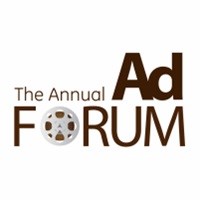






Chaired by industry veteran Andy Rice, marketing and advertising stalwarts and younger achievers included House of Brave's Rob van Rooyen, The Mouse that Roared's Kevin Kleynhans, Ornico's Marketing Manager Mongezi Mtati and Famous Copy's Deon Wiggett.
The series of adverts spanned from 1978 to the early 2000s, and, shown to a varied audience, seemed to have a definite formula that received a nearly unanimous and positive reaction from the onset.
Beginning with Chevrolet's famously catchy jingle "braaivleis, rugby, sunny days, and Chevrolet!" from a South African era that has definitely passed - it was noted that some things remain innately true and a brand that taps into this core truth about a people, could get away with almost anything.
A look into Sasol's famous 'glug-glug' had van Rooyen surmising, "Old ads possess a human endearment that is loved." He used a highly emotive IBM/ISM advert that features a baby and adult elephant walking through the plains, to show the power that great music and animals have in inducing joy. "Social commentary wins in South Africa. An ad needs to be personable, down to earth, and have a human story where the character wins...character development is important to us. We love characters that remind us of ourselves - such as the popular Yebo Gogo and Castrol's Boetie and Swaar characters."
Kleynhans, who is partly responsible for the BMW mouse advert, spoke of the difference in advertising budgets between now and then. "Back in the day, creatives would bravely open their visual stories in exotic, far-away locations, and client was happy to 'go big' for their brand, and make these happen. Production took days, everyone was concerned with a spectacularly finished product rather than finding ways to cut costs and save time. Agreeing with the emotive power of advertising, we are now over-selling instead of allowing engagement. Briefs from clients used to be very simple. As in 'give us an ad that shows our car to have power steering' - and from such requests usually came strong and simple ideas as the BMW mouse."
Kleynhans reminded the audience of the beauty of simplicity versus today's advertising culture that aims to fit everything - and the kitchen sink - into one advert, ultimately overloading its audience with many features that mean nothing if they cannot be remembered.
Wiggett noted, "Older, effective ads said one thing." He spoke of the power of a demonstrative ad, agreeing that a good demo will cleverly show the benefit of a product, often through some exaggeration as with the BMW mouse. Being younger, he felt uncomfortable by some archaic 'white South African world' adverts, but was similarly suspicious of those that painted over their brands by falsifying a multi-cultural unity during the wrong time of a young democracy. With regard to character development and single-minded propositions, he offered that perhaps the market was currently too fragmented to achieve a unity in thought due to constantly evolving subcultures - the best a brand could do, is be true to itself and the people it represents during a particular era.
Mtati offered some angles from which to view the bulk of the older South African ads - choosing to look at those featured from a strategic point of view despite their airing during an apartheid South Africa.
Asked whether he took offence to the Chevrolet ad, he said, "not really," jokingly adding that he would not have seen it without a television anyway. "In comparison to what we see today, where every ad is trying to 'one-up' the other, this ad connected everything about the people at the time. It talked to everything that was true to a South African (who had a TV in 1978), and it connected all the dots, for everyone, around this brand, and based on that, it works for me."
He advised of the danger of trying to fool South Africans by simply adapting a recently told message for a different race - using Cremora 'it's not inside, it's on top' ad as an example of the awkwardness caused by its remake with a black family and how that had had a dismal effect on Cremora sales. He however, stressed that he believed it was possible to depict a reality or dream, which had not yet come to be, as long as this dream was in line with the brand's philosophy. A case in point was how Castle had envisioned a united South Africa, wanting to make this a reality from early on - hence the sentiment behind its multiracial adverts could be genuinely appreciated, whether or not the vision was a reality at the time.
The general feel at the AdForum, was that ads of today were missing a true connection with their target market and required a little more brevity and authenticity to be more than just safe and humdrum, but a true reflection of the people they aim to affect.